
 Flash News
Flash News
AMP checks at Kapshtica customs, drug found hidden in a vehicle
Insult and denigration, the Journalists Association of Albania condemns Ristan's attack on the "Piranha" journalist
"Land Rover" abandoned for two years in the Port of Durres, 3 firearms and cartridges found, 24-year-old wanted
Mavraj's message to the Rossoneri: Kosovo is ours forever. Now play football
Posta e mëngjesit/ Me 2 rreshta: Çfarë pati rëndësi dje në Shqipëri
The population of Albania is shrinking for the fifth year in a row, in 2021 42 thousand people left
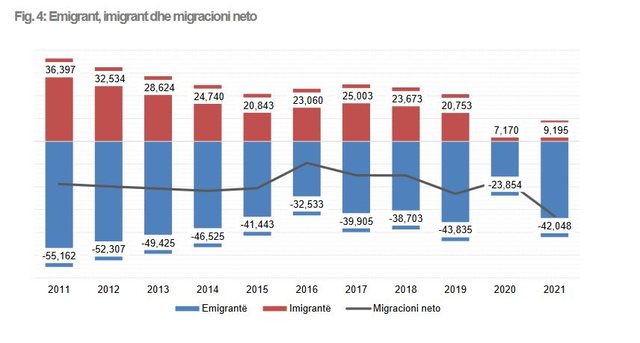
Population aging, high emigration rates and the effects of Covid-19 on population health have led to a decline in population in 2021.
INSTAT reported that the population of Albania on January 1, 2022 is 2,793,592 inhabitants, experiencing a decrease of 1.3%, compared to January 1, 2021. This is the fifth consecutive year with a contraction in the number of inhabitants.
During 2021 the natural increase of the population (birth-death) was -3,296 inhabitants, marking for the first time a negative natural increase.
During 2021, a significant increase in emigration was observed, while the number of returnees remains low.
INSTAT reported that the number of immigrants in 2021 was 9,195 persons and the number of emigrants was 42,048 persons. The number of departures, according to INSTAT graphs, was the highest since 2019 and 2014.
Net migration (the difference between immigrants and emigrants) increased in absolute value, compared to a year ago: from -16,684 to -32,853 inhabitants in 2021.
The average age of the population was also increasing.
According to INSTAT, On January 1, 2022, the median age of the population is 38.2 years, up from 37.6 on January 1, 2021.
On January 1, 2022, the youth dependency ratio (the ratio of the population 0-14 years old to the population 15-64 years old) decreased compared to January 1, 2021: from 24.2% to 24.0%, while the ratio of elderly (ratio of population 65+ to population 15-64 years old) increased: from 22.3% to 23.1% over the same period.
The gender ratio of the total population on January 1, 2022 has decreased compared to January 1, 2021: from 99.3 to 98.6 males per 100 females.
The gender ratio at birth increased, reaching 107.5 in 2021, from 106.6 in 2020.
During 2021, 27,284 babies were born, a decrease of 2.8%, compared to the previous year. The number of deaths in 2021 was 30,580 people, having an increase of 10.8%, compared to a year ago. Deaths increased significantly due to the health consequences of Covid-19 (Monitor note).
In 2021 the number of immigrants was 42,048 people and the number of immigrants was 9,195 people.
Tirana, Durres and Fieri have the highest weight in the total population.
Më 1 janar 2022 Tirana zë rreth 32,9 % të popullsisë gjithsej, duke vazhduar të jetë një nga qarqet më të populluara të vendit, ndjekur nga Durrësi dhe Fieri me nga 10,4 % dhe 10,0 % përkatësisht.
Sa i përket qarqeve të tjerë, pesë prej tyre zënë respektivisht nga 2 % deri 5 % të popullsisë gjithsej.
Më 1 janar 2022 popullsia u rrit vetëm në një qark të vendit
Përllogaritjet e popullsisë më 1 janar 2022 tregojnë se vetëm një qark i vendit shënojë rritje të popullsisë, krahasuar me një vit më parë, ndërsa njëmbëdhjetë qarqet e tjerë shënuan rënie të popullsisë. Rritja u shënua në Tiranë (+ 0,8 %).
Në të kundërt, uljet më të mëdha të popullsisë u shënuan në qarqet: Gjirokastër (- 4,7 %), Berat (- 3,7 %) dhe Dibër (- 3,6 %).
The region with the highest youth dependency ratio is Kukes (33.5%), which also results as the region with the highest elderly dependency ratio (26.2%), followed by the Lezha region me (26.1%). Monitor
Latest news


AMP checks at Kapshtica customs, drug found hidden in a vehicle
2025-06-07 12:15:26
Kosovo Assembly fails to be constituted even after 28 attempts
2025-06-07 11:58:58


Oh Albania, you have no old age!
2025-06-07 11:05:01


Mavraj's message to the Rossoneri: Kosovo is ours forever. Now play football
2025-06-07 10:10:52


Why are Ukrainians being accused of arson at Keir Starmer's properties?
2025-06-07 09:16:24
Foreign exchange, how much foreign currencies are sold and bought today
2025-06-07 09:04:55

Horoscope, what do the stars have in store for you today?
2025-06-07 08:31:29
Weather forecast for Saturday, here's what the temperatures will be like
2025-06-07 08:17:35
Posta e mëngjesit/ Me 2 rreshta: Çfarë pati rëndësi dje në Shqipëri
2025-06-07 08:01:23
Heavy metals in the Drin River, causes of cancerous diseases
2025-06-06 22:54:02


Works in Spaç, Lubonja: Destruction of collective and historical memory
2025-06-06 21:54:32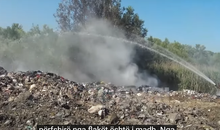

DASH: Balkans, part of American strategy for expelling migrants
2025-06-06 21:12:33

Ilir Shqina, a diplomat, and her business partner Grida Dumas were suddenly born
2025-06-06 20:21:46


Couple injured in Kavaja, police find firearm hidden in wall
2025-06-06 19:05:19

EULEX mandate in Kosovo extended until 2027
2025-06-06 17:58:20
These are the 3 zodiac signs that will be favored in the next decade
2025-06-06 17:50:52


Anthropology
2025-06-06 17:06:00
EU supports International Criminal Court after US sanctions
2025-06-06 16:47:51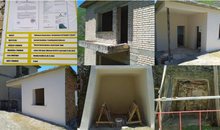
Gonxhe ignores concerns about Spaçi and defends the continuation of the works
2025-06-06 16:31:42
Providing online services, report: Institutions, delays in update requests
2025-06-06 16:24:10

The head of the Vlora Cadastre is changed again
2025-06-06 15:58:49
With a rounded belly, Dafina Zeqiri enjoys the holidays with her partner
2025-06-06 15:36:06

Foods that should not be missing from the Eid al-Adha table
2025-06-06 15:04:48
They exploited girls for prostitution in Vlora, 28-year-old arrested
2025-06-06 14:44:26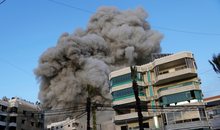
Israel warns of more attacks in Lebanon
2025-06-06 14:26:30
The race for the head of the BKH, the deadline for applications ends today
2025-06-06 14:15:18
14-year-old girl in Vlora rescued after risking drowning at sea
2025-06-06 14:04:23
Challenge with Albania, Serbian team arrives in Tirana
2025-06-06 13:49:04
He injured the married couple in Rrogozhina, here is who the perpetrator is
2025-06-06 13:34:20

Berisha wishes Eid al-Adha: Blessings to your families and our nation
2025-06-06 13:09:28
He injured his neighbors with a gun, the perpetrator surrendered to the police
2025-06-06 13:02:47

Tom Cruise enters Guinness World Records
2025-06-06 12:38:48
From orange peels to bananas, discover the foods that help you with stress
2025-06-06 12:28:53


How did the feud between Donald Trump and Elon Musk start?
2025-06-06 11:52:32
The prosecution sends 5 Kosovar citizens to trial for drug smuggling
2025-06-06 11:33:56
21-year-old injured with knife in Saranda
2025-06-06 11:24:10
Kosovo citizens flock to the Albanian coast, long queue from Morina
2025-06-06 11:11:07
Gunfire in Kavaja, shot at a married couple
2025-06-06 11:05:01
Merz: Bashkëpunim i ngushtë Gjermani-SHBA
2025-06-06 10:45:35
A marijuana plantation is found in Cakran, a 24-year-old man is arrested
2025-06-06 10:25:53
Gianni De Biasi shows the formula for how we can win against Serbia
2025-06-06 10:08:57
Hoxha: The CEC was one of the main architects of the destruction of free voting
2025-06-06 09:52:16
Foreign exchange, June 6, 2025
2025-06-06 09:33:01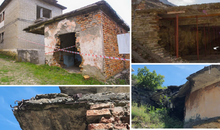


Accident on the new Kukes bridge, three vehicles collide
2025-06-06 08:43:06
Horoscope, what do the stars have in store for you today?
2025-06-06 08:28:14
Clear weather with few clouds, the forecast for this Friday
2025-06-06 08:13:54

Morning Post/ In 2 lines: What mattered yesterday in Albania
2025-06-06 07:46:29
In trial for tender abuse, socialist MP targets ILD
2025-06-05 22:37:09
Tabaku: The left in Albania has shown with facts that it is against integration
2025-06-05 22:09:44

Uzbekistan qualifies for the World Cup for the first time
2025-06-05 21:14:35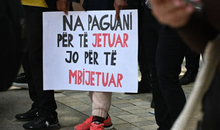
Index: Albania among countries that consistently violate workers' rights
2025-06-05 20:53:35
Accident in Burrel, two vehicles collide, 6 injured
2025-06-05 20:31:27
Discover foods that help you relieve stress
2025-06-05 20:16:34
Kalaja: I have a video where votes were taken from the DP and given to the PS
2025-06-05 19:58:04
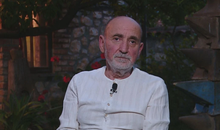

Berisha: The international community does not accept the farce
2025-06-05 18:57:18
Trump after conversation with Xi: US and China will resume trade talks
2025-06-05 18:35:36
Berisha on May 11: 28 MPs were under the patronage of drug cartels
2025-06-05 18:15:44
The session in the Assembly closes, the majority approves the draft laws alone
2025-06-05 17:55:21
Kurban Bajrami, kreu i Komunitetit Mysliman të Shqipërisë uron besimtarët
2025-06-05 17:29:17
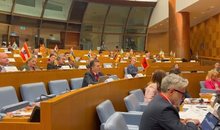
Media at OSCE conference: Organized crime has captured the Albanian state
2025-06-05 16:50:41
Car hits 75-year-old man at white lines in Vlora
2025-06-05 16:42:48
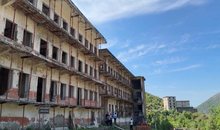
Protest in Spaç, after restoration interventions
2025-06-05 16:27:49
Photo/ Concrete mixer falls into abyss in Ulëz, driver rushed to hospital
2025-06-05 16:15:15
May 11/ Këlliçi: There are attempts to influence the final OSCE-ODIHR report
2025-06-05 16:06:38
Immigration is emptying schools and universities
2025-06-05 15:53:38
Plague breaks out, Kosovo bans import of sheep and goats from Shkodra and Kukësi
2025-06-05 15:48:23
After Tirana, KAS also decides to open the ballot boxes in Dibër
2025-06-05 15:31:03
Tirana is "paralyzed" again, here are the roads that will be blocked tomorrow
2025-06-05 15:20:12
